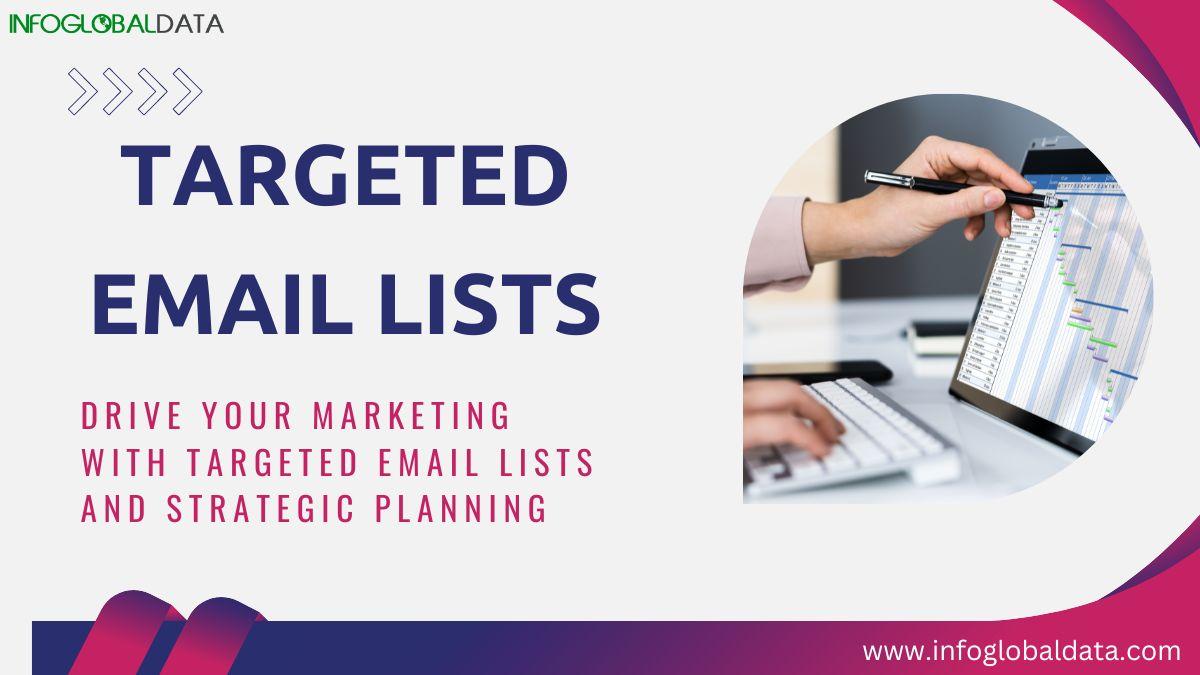In today’s digital age, where businesses strive to engage with their customers on multiple platforms, email marketing remains a powerful tool for precise and effective campaigns. Targeted email lists are at the heart of successful email marketing strategies. This article explores the significance of targeted email lists and how they empower businesses to run tailored campaigns that resonate with their audience.
Understanding Targeted Email Lists
A targeted email list is a database of contacts who have willingly shared their email addresses and expressed interest in receiving specific information, promotions, or updates from a brand. These lists are meticulously curated to include individuals who are more likely to engage with the content, products, or services being offered. Unlike generic email blasts, targeted email lists allow for personalized and relevant communication with potential and existing customers.
Benefits of Targeted Email Lists
- Increased Conversion Rates
By directing content to a specific audience, businesses can significantly improve their conversion rates. When subscribers receive content that aligns with their interests and needs, they are more likely to take action, such as making a purchase or signing up for a service.
- Enhanced Personalization
Personalization is key in the modern marketing landscape. Targeted mailing list enable businesses to address recipients by their names, tailor content based on their preferences, and offer recommendations that are relevant to their previous interactions.
- Better Customer Engagement
Engagement is crucial for building strong customer relationships. Targeted emails prompt higher open and click-through rates, encouraging recipients to actively engage with the brand’s content and offers.
Building a Targeted Email List
- Define Your Target Audience
Knowing your target audience is fundamental to building an effective email list. Conduct market research and gather insights about your potential customers’ demographics, interests, pain points, and preferences.
- Create High-Quality Content
To attract subscribers, offer valuable content that addresses the needs and interests of your target audience. Share insightful blog posts, guides, videos, or exclusive offers that encourage visitors to sign up.
- Utilize Lead Magnets
Lead magnets, such as free e-books, webinars, or discount codes, entice visitors to share their email addresses in exchange for valuable content.
- Optimize Sign-up Forms
Streamline the sign-up process by keeping forms simple and easy to understand. Collect relevant information while ensuring that it is not too time-consuming for users.
Implementing Precise Email Campaigns
- Segmentation is Key
Segment your email list based on various criteria, such as demographics, behavior, or past interactions. This enables you to deliver content that directly addresses the needs and interests of each group.
2.Crafting Tailored Content
Tailor your emails to match the preferences of each segment. Personalized content fosters a deeper connection with the recipients and increases the chances of conversion.
- Timing and Frequency
Find the optimal timing and frequency for your email campaigns. Avoid bombarding subscribers with too many emails and instead focus on sending timely, relevant messages.
- A/B Testing for Optimization
Conduct A/B tests to identify the most effective email elements, such as subject lines, CTAs, and content. Consistently improve your campaigns by analyzing the results and making necessary optimizations.
Nurturing Long-Term Customer Relationships
- Provide Value and Relevance
Consistently deliver valuable and relevant content to your subscribers. Focus on solving their problems, addressing their pain points, and fulfilling their needs.
- Ask for Feedback and Listen
Encourage feedback from your email subscribers and use it to improve your products, services, and email communication.
- Exclusive Offers and Promotions
Reward your loyal subscribers with exclusive offers, discounts, or early access to new products. This fosters a sense of exclusivity and strengthens customer loyalty.
Ensuring GDPR Compliance
- Obtaining Consent
Always obtain explicit consent from subscribers before adding them to your email list. Make sure to adhere to data protection regulations, including the General Data Protection Regulation (GDPR).
- Honoring Opt-out Requests
Provide an easy and visible option for recipients to opt-out of your email list. Respect their decision and promptly remove them from your mailing list.
Measuring and Analyzing Email Campaigns
- Key Metrics to Track
Monitor essential metrics like open rates, click-through rates, conversion rates, and unsubscribe rates. Analyze these metrics to gauge the success of your email campaigns.
- Learning from Data Insights
Use data insights to refine your email marketing strategies continually. Gain an understanding of what performs effectively and identify areas that require improvement.
Avoiding Common Email Marketing Mistakes
- Spamming and Over-Mailing
Avoid spamming your subscribers with excessive emails. Respect their inbox space and send relevant content at appropriate intervals.
- Ignoring Mobile Responsiveness
Enhance your emails for mobile devices as a considerable number of users access their emails through smartphones or tablets.
- Neglecting Segmentation
Failing to segment your email list can lead to irrelevant content being sent to subscribers, leading to disengagement and a decline in open rates.
The Future of Targeted Email Marketing
With advancements in technology and data analytics, the future of targeted email marketing looks promising. Artificial intelligence and machine learning algorithms will play a significant role in further enhancing the personalization and automation of email campaigns. By harnessing customer data and behavior patterns, businesses will be able to create even more precise and hyper-targeted content for their subscribers.
Moreover, interactive elements in emails, such as quizzes, surveys, and interactive product showcases, will increase engagement and encourage recipients to interact directly with the email content.
As email marketing evolves, there will be a growing emphasis on ensuring ethical practices and data privacy. Businesses will continue to prioritize obtaining explicit consent from subscribers and respecting their preferences regarding communication frequency and content.
Conclusion
Targeted email lists are a game-changer for businesses looking to run effective and precise marketing campaigns. By understanding their target audience and tailoring content to their needs, businesses can boost engagement, increase conversion rates, and nurture long-term customer relationships.
To leverage the power of targeted email lists successfully, businesses must prioritize personalization, segmentation, and data-driven decision-making. By respecting data privacy regulations and consistently providing value to subscribers, companies can create a loyal and engaged customer base.







